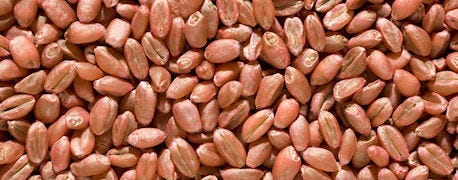August 27, 2014

Should you treat winter wheat seed with a fungicide this year?
Ask yourself the following questions, suggests Emmanuel Byamukama, SDSU Extension plant pathologist:
•Is there a history of seed-borne/soil borne disease?
•Is the crop for seed production?
•Is the crop going to be planted into wheat stubble?
•Is it going to be planted early?
•Is the germination rate of the seed lot low?
If you answer "yes" to any of the questions, treating the seed might be a good idea.
However, remember that a fungicide seed treatment will not compensate for bad seed (e.g. shriveled, mechanical damaged or impure seed), Bymaukama says.

Treated winter wheat seed is ready to plant
Also, seed treatments are generally only effective for about three weeks. Therefore, slowed seedling growth due to cool soil temperatures or favorable weather conditions for infection after three weeks have passed may still pose a risk for potential seedling infections.
If you've had thin stands of winter wheat before, then using a fungicide with more than one active ingredient may be a good idea. It may make the treatment more effective..
If wheat seed came from a field that had ergot, a seed treatment containing a triazole fungicide will reduce sclerotia viability.
Besides treating seed, you may want to do other things to reduce the risk of disease developing in seedlings. Rotating crops, using certified seed and selecting resistant varieties are all good ideas, Bymaukama says.
Source: SDSU
You May Also Like




